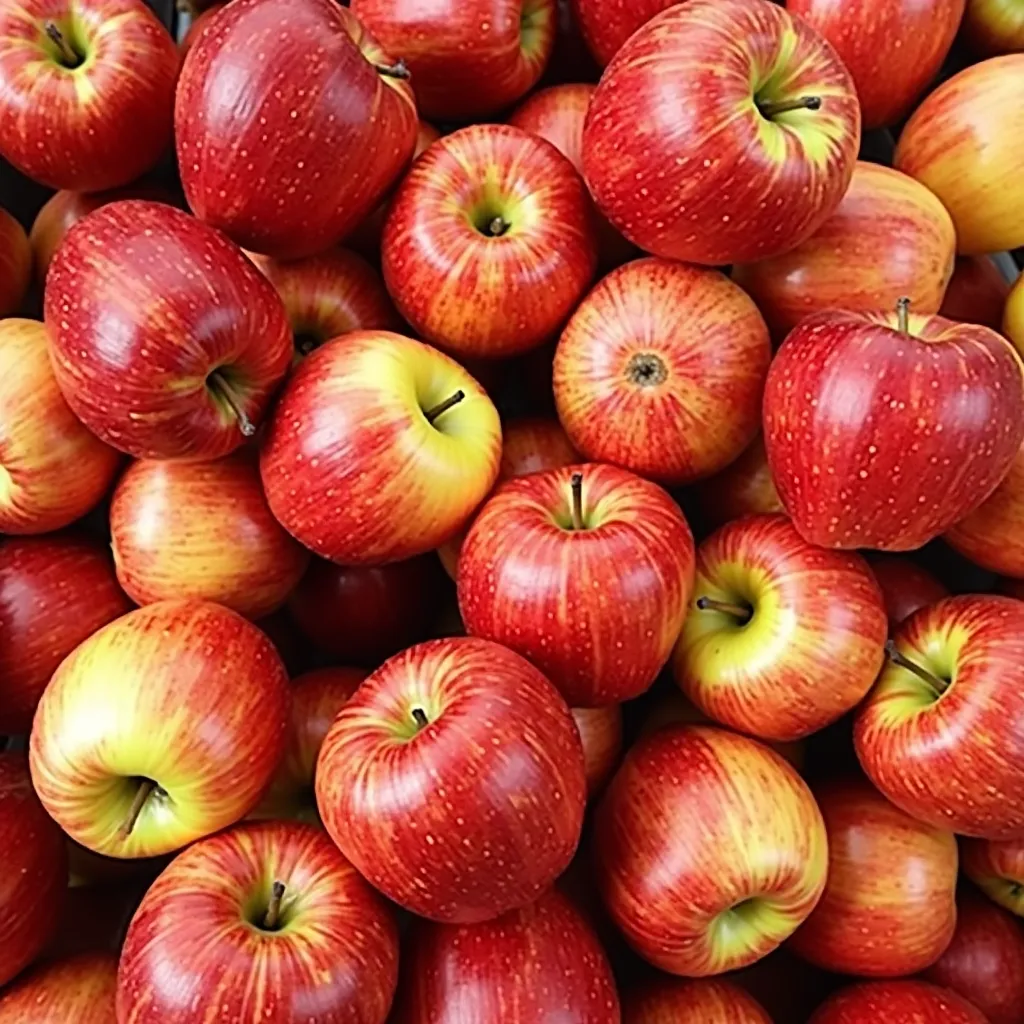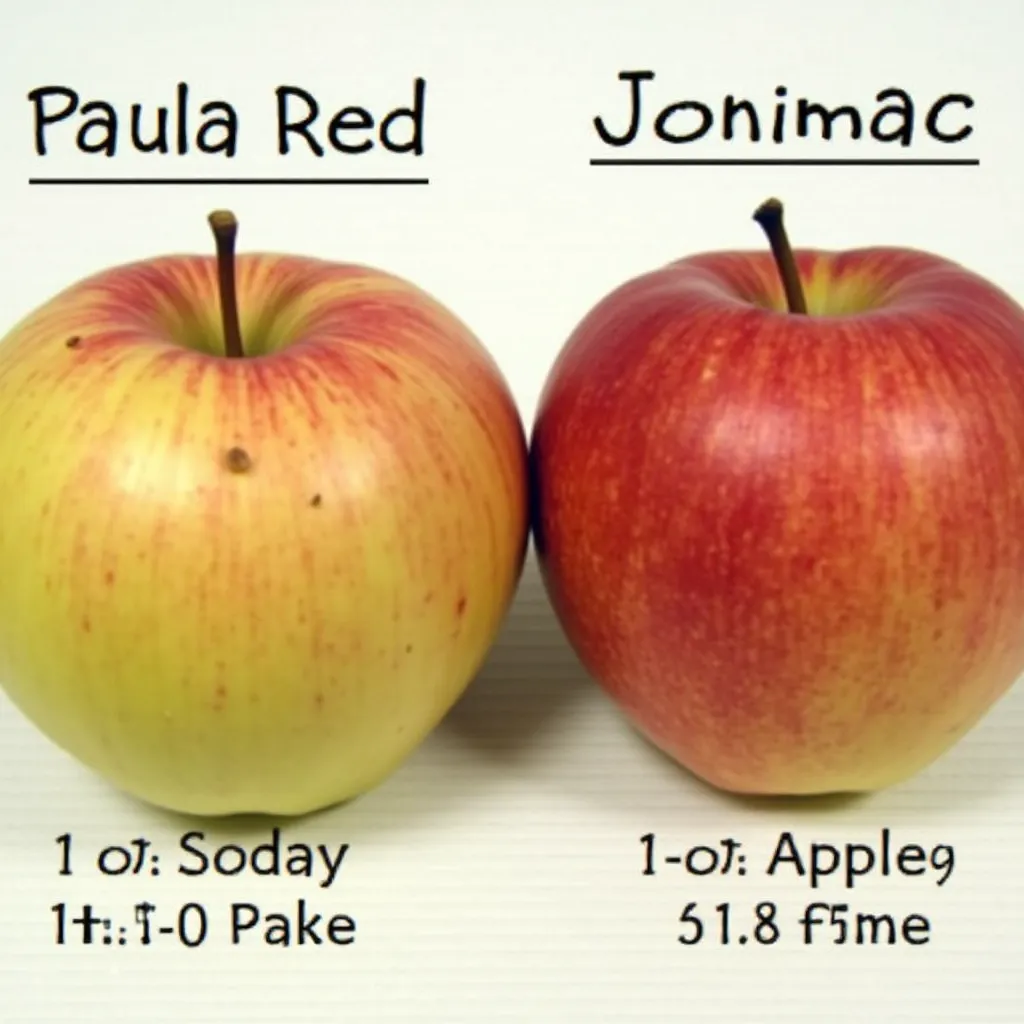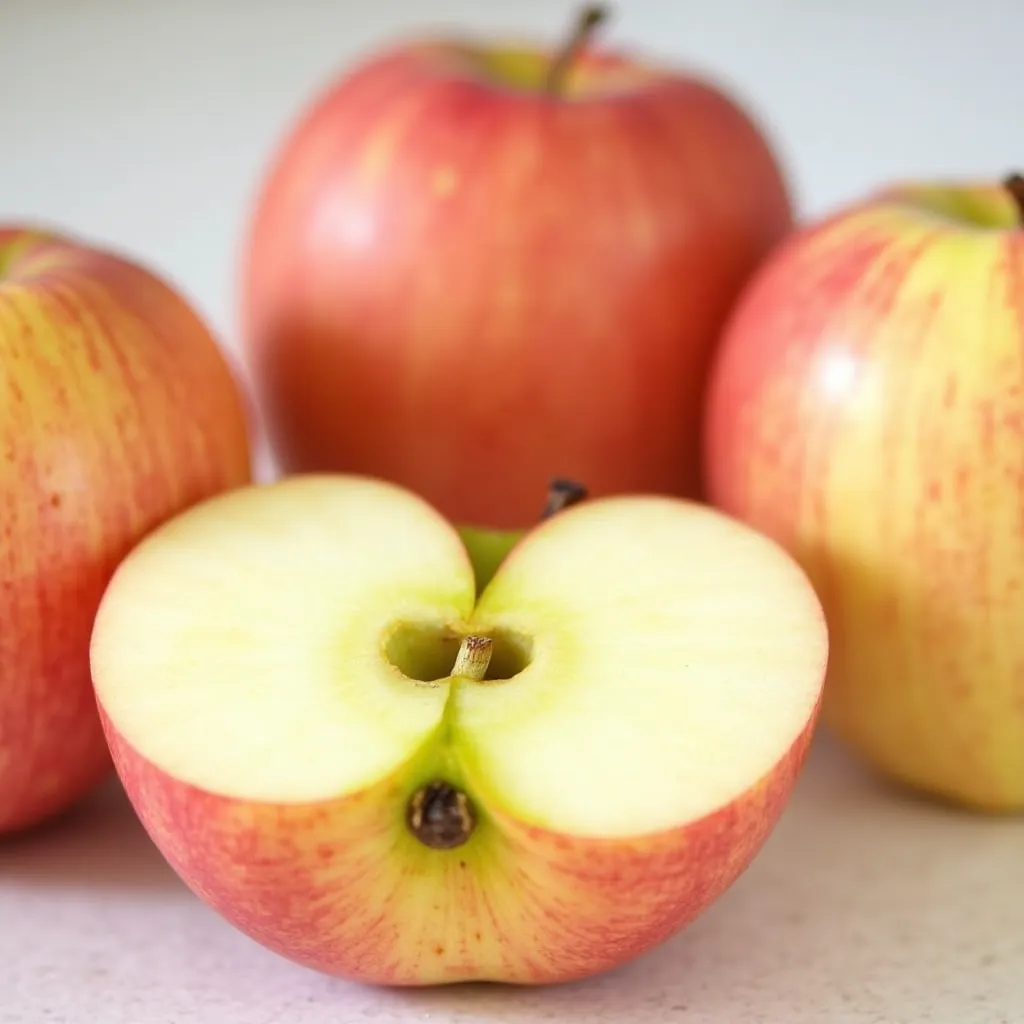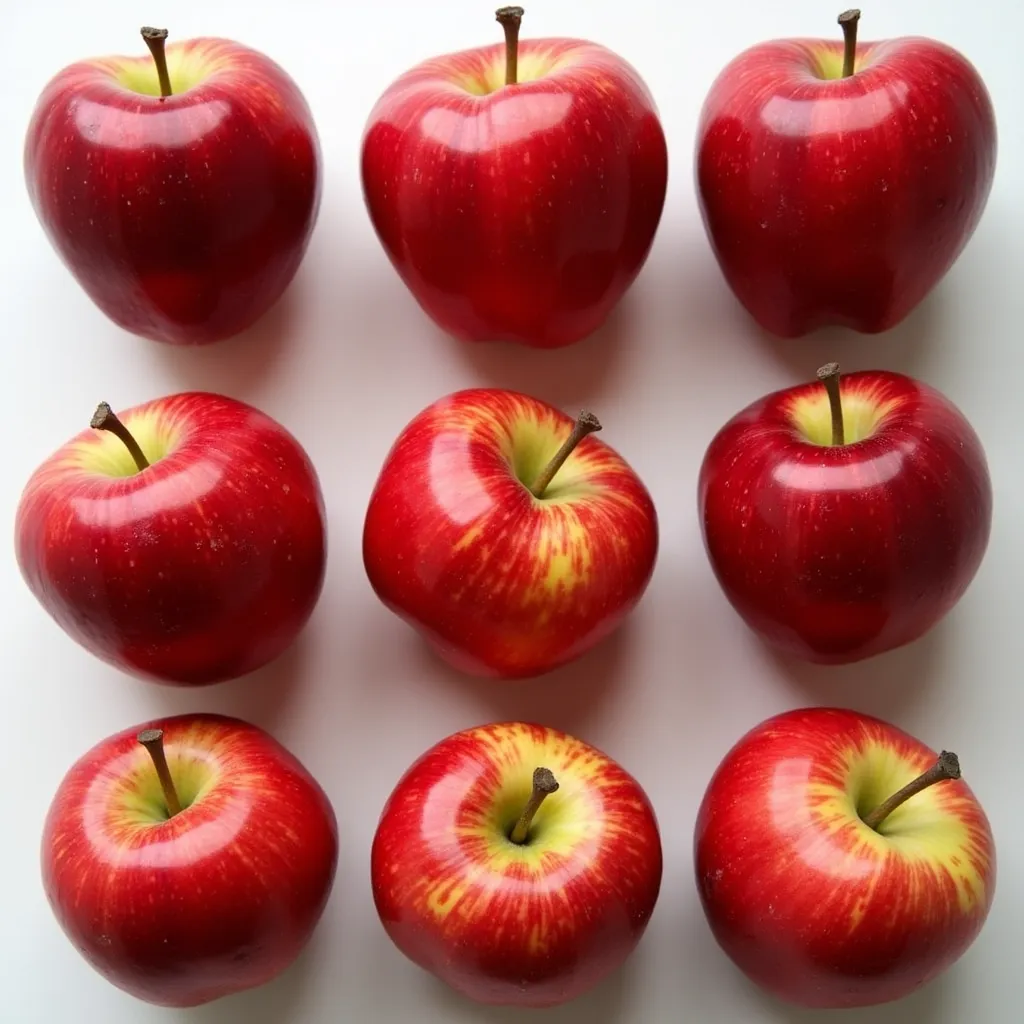· varieties · 5 min read
Red Apple Varieties: Complete Guide to Red Apple Types
Discover the diverse world of red apples! This guide explores various types of red apples, detailing their flavor, texture, growing characteristics, and best uses.

Variety Overview
This comprehensive guide delves into the fascinating world of red apple varieties, exploring the numerous types of red apples available to consumers and growers alike. From the well-known and widely available to the more obscure and specialty kinds of red apples, we cover their distinctive characteristics, growing requirements, and best uses. Focusing on red apple tree varieties with a primarily sweet and tart flavor profile, crisp and firm texture, and good storage life, this guide aims to provide valuable insights for apple enthusiasts, home gardeners, and culinary professionals seeking the perfect red apple. We’ll examine popular red apple varieties like the Crimson Crisp apples, Paula Red apple (also known as Paulared apple), Pacific Rose apple, Idared apple tree variety, and Jonamac apple from Jonamac orchards, highlighting their unique attributes and place within the broader spectrum of red apples.
Characteristics
Red apples offer a delightful range of flavors and textures. The varieties covered here typically exhibit a combination of sweet and tart flavors, creating a balanced and enjoyable eating experience. Their texture is predominantly crisp and firm, providing a satisfying bite. Visually, these apples are appealing, displaying a mix of red and yellow hues in their skin. The color patterns can be either solid or striped, adding to their visual interest. These medium-sized apples are generally considered to have a good storage life, maintaining their quality for a reasonable period when stored properly.
Growing Information
Cultivating these red apple tree varieties requires a moderate level of effort. They are best suited for regions with spring and summer growing seasons, with harvest typically occurring in the early to mid part of the season. These varieties generally exhibit moderate growing difficulty and moderate disease resistance, meaning they are relatively adaptable but may require some management to protect against common apple diseases and pests.
Best Uses
The versatility of these red apples makes them suitable for a variety of uses. Fresh-eating is a primary application, as their crisp texture and balanced flavor make them enjoyable straight from the tree or as a snack. They also perform well in baking, adding sweetness and moisture to pies, cakes, and other desserts. Their ability to hold their shape makes them a good option for cooked dishes where a firm texture is desired.
History and Origin
Many of the popular red apple varieties originate from the United States, with significant breeding efforts taking place around the mid-20th century, specifically around 1950. The featured varieties often have a lineage tracing back to classic cultivars such as Golden Delicious and Red Delicious, combining the desirable traits of their parentage to create new and improved types of red apples.
Storage and Handling
Thanks to their good storage life, these red apple varieties can be kept fresh for an extended period. For optimal storage, it is recommended to keep them refrigerated in a cool, humid environment. Properly stored apples can maintain their crispness and flavor for several weeks or even months, depending on the specific variety.
Availability
These red apples are typically available during the spring and summer months, coinciding with their harvest season. Early-harvest varieties will appear in markets sooner, while mid-season varieties will extend the availability window. Local farmers’ markets and grocery stores are common sources for finding these fresh, seasonal apples.
Selection Tips
When selecting red apples, look for specimens that are firm to the touch, free from bruises or blemishes, and have a vibrant color. The presence of both red and yellow hues indicates ripeness, while a striped pattern adds visual appeal. A slight give when gently squeezed suggests optimal crispness. Avoid apples with soft spots or signs of decay.
Comparison to Similar Varieties
Compared to purely sweet apples like Fuji or Gala, these red apple varieties offer a more complex flavor profile due to their tartness. Their crispness is similar to varieties like Honeycrisp but often with a firmer texture. The lineage from Golden Delicious often contributes sweetness and aromatic qualities, while Red Delicious ancestry may provide a classic apple flavor and elongated shape in some cases. Crimson Crisp apples, for example, provide an excellent crisp texture, while Paula Red (Paulared apple) tends towards a slightly earlier harvest. Pacific Rose apple offers a unique blend of sweetness and tartness. Idared apple tree varieties are often known for their storage capabilities, and Jonamac apple, frequently found at Jonamac orchards, presents a balance of flavor and texture.
Common Uses
Expanding on their best uses, these red apples shine in various culinary applications. Fresh eating is paramount, providing a healthy and delicious snack. In baking, they excel in pies, crisps, and muffins, offering a balance of sweetness and tartness that complements baked goods. Their firm texture also allows them to be used in cooked dishes like sauces and compotes, where they hold their shape without becoming mushy. Furthermore, their juice can be used to create refreshing beverages and cider.
Growing Tips
For successful cultivation of these red apple tree varieties, consider the following: Choose a location with well-drained soil and full sun exposure. Pruning is essential to maintain tree shape, promote air circulation, and encourage fruit production. Monitor for common apple pests and diseases, and implement appropriate control measures as needed. Thinning the fruit clusters can improve fruit size and quality. While these varieties have moderate disease resistance, preventative measures such as selecting disease-resistant rootstock and practicing good orchard hygiene can minimize potential problems. For Jonamac apple and Idared apple trees, consider specific regional recommendations.
This detailed guide should help you navigate the exciting world of red apple varieties. Whether you’re a seasoned apple connoisseur or a budding home gardener, there’s a red apple out there perfect for your needs and preferences. Enjoy exploring the many types of red apples and their delicious culinary potential!


